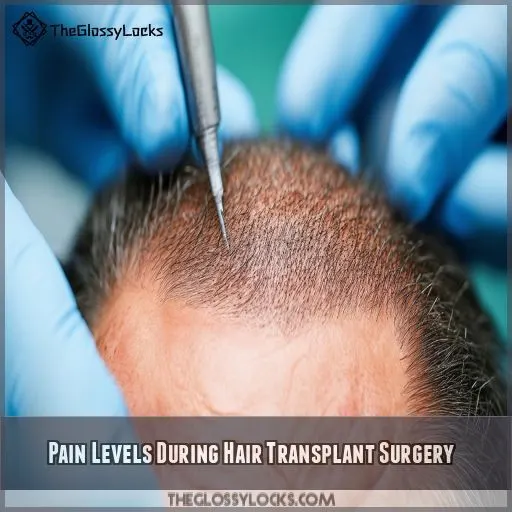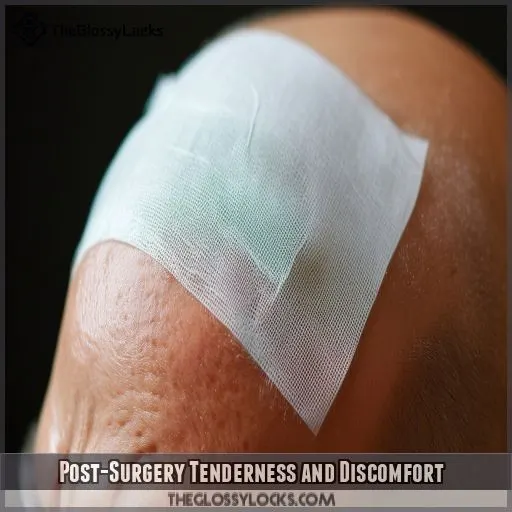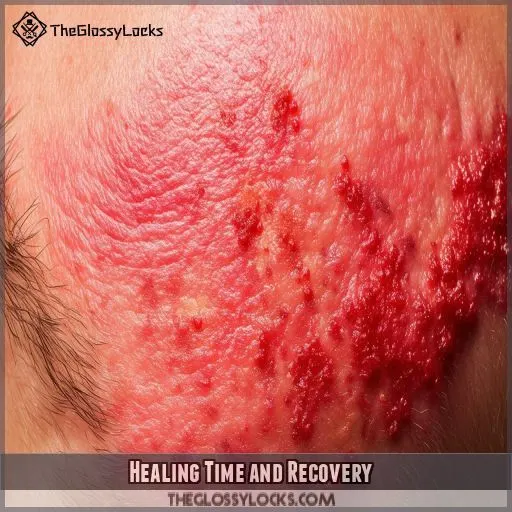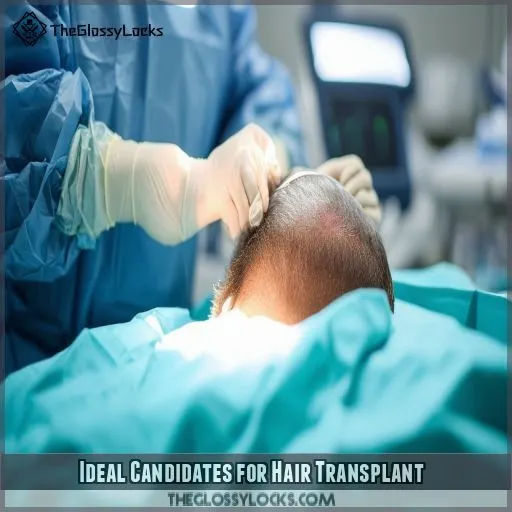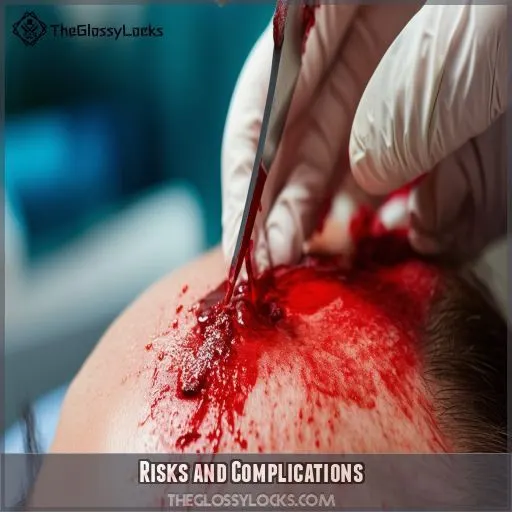This site is supported by our readers. We may earn a commission, at no cost to you, if you purchase through links.

Afterward, soreness and swelling are both easily controlled by mild painkillers. This article will walk you through what to expect and how to minimize such discomforts—putting you well on your way to rejuvenated confidence
Table Of Contents
- Key Takeaways
- Are Hair Transplants Painful?
- Pain Levels During Hair Transplant Surgery
- Post-Surgery Tenderness and Discomfort
- Healing Time and Recovery
- Consultation and Preparation
- Ideal Candidates for Hair Transplant
- Risks and Complications
- Frequently Asked Questions (FAQs)
- How long does pain last after a hair transplant?
- How painful is hair replacement?
- What are the disadvantages of hair transplant?
- How long does the donor area hurt after a hair transplant?
- Is a hair transplant painful?
- What are the risks and benefits of a dental transplant?
- What are the side effects of a hair transplant?
- How long does hair transplant pain last?
- What is the cost of a hair transplant?
- How long does a hair transplant procedure take?
- Can I dye my hair after a transplant?
- Will my transplanted hair look natural?
- How soon can I return to work?
- Conclusion
Key Takeaways
- Hair transplants are like planting a garden – a bit delicate, but the pain is manageable with local anesthesia.
- The tugging and pulling during the procedure are usually not painful, but mild painkillers can help with any discomfort afterward.
- Healing time varies, but most people can return to work within a few days.
- Don’t worry, it’s not as painful as you might think!
Are Hair Transplants Painful?
Hair transplants aren’t generally painful because of local anesthesia, which numbs the area. You might feel some pulling or tugging during the procedure, but it’s tolerable for most.
After surgery, the areas treated might be tender, with some redness and swelling. Mild painkillers usually handle any discomfort well. Keep in mind, recovery time varies: FUT usually takes 10-14 days, while FUE heals quicker, around 3-7 days.
It’s natural to worry, but knowing what to expect can ease your mind. Curious about the full process and tips for a smooth recovery? Stay with us for more insights
Pain Levels During Hair Transplant Surgery
During a hair transplant, local anesthesia is used to minimize discomfort, though you might feel some pulling or tugging sensations. Pain tolerance varies, so your experience could be different from others
Local Anesthesia Minimizes Discomfort
Local anesthesia is indeed crucial for managing pain when it comes to hair transplantation procedures. It localizes the scalp, which attenuates your feeling of pain during surgery. This makes everything more tolerable, regardless of pain tolerance or procedural choices between FUT and FUE hair transplants.
Pulling or Tugging Sensations May Occur
During a hair transplant, you might feel pulling or tugging sensations. These sensations can vary in intensity and duration, often caused by the extraction and implantation process. They aren’t typically painful, and discomfort can be managed effectively. Awareness and preparation are key to a smoother hair restoration experience
Pain Tolerance Varies Individually
Pain tolerance is different for everyone throughout hair transplant surgery. The sensility of each individual to discomfort may vary, and for that reason, the experience will also differ from person to person. That said, effective management of pain is necessary. Here’s what to consider:
- Individual sensitivity.
- Local anesthesia minimizes sensation.
- Mild pain might occur during recovery.
- Discussing your pain level with your surgeon
Post-Surgery Tenderness and Discomfort
After your hair transplant, you might feel tenderness in the treated areas. Redness and swelling are also common, but mild pain killers can help manage any discomfort
Treated Areas May Be Tender After Surgery
Following a hair transplant, the treated areas will be sore. Initially, the sites are covered with bandages, which may serve as protection; these can also be used therapeutically, as some will help the healing process.
Take pain medications as necessary to help manage your pain during the recovery process. Be careful and gentle with the donor site and the new grafts so the recovery will be smooth and easy, and your pain will be alleviated
Redness and Swelling May Occur
You can be observed to develop redness and swelling within the treated areas. Keeping cold compresses on the scalp will help reduce these symptoms. Getting plenty of rest is essential in terms of value and speeds up your recovery process. Further, medication prescribed by your doctor will help manage standard hair transplant side effects.
Mild Pain Killers Can Manage Discomfort
To manage discomfort, mild pain killers can be effective post-surgery. They help ease tenderness, redness, and swelling. Common options include:
- Over-the-counter (OTC) medications: Ibuprofen or acetaminophen.
- Prescription medications: For more severe pain.
- Topical treatments: Soothing ointments for the donor site
Healing Time and Recovery
Healing time differs between FUT and FUE procedures, with FUE offering a faster recovery of 3-7 days. Your full recovery will depend on individual factors such as your health and adherence to post-operative care
FUT Procedure Has a Longer Recovery Time
The FUT procedure is more invasive and may lead to a greater possibility of scarring at the donor site, mainly in the cases of male pattern baldness or thinning of hair. Since it removes hair follicles in strips, prolonged recovery time has to be factored in. One has to bear the healing time for the best desired result patiently
FUE Has a Faster Healing Time (3-7 Days)
Transitioning from FUT, FUE has a quicker 3–7 days of healing time. The following explain it:
- Minimal Scarring: There are small punctures in the FUE method, leaving tiny, practically invisible.
- Local Anesthetic: Eases.
- Faster Return to Normalcy: Lesser downtime is assured because of quicker recovery.
Anticipate minor scalp numbness post-procedure
Full Recovery Varies Based on Individual
Full recovery from a hair transplant varies. Some experience quick healing, while others need more time. Generally, post-surgery expectations include managing discomfort and anticipating individual recovery times. Here’s a snapshot of common recovery periods:
| Procedure | Recovery Time | Common Discomfort | Long-term Results |
|---|---|---|---|
| FUT | 10-14 days | Tenderness, Redness | Effective |
| FUE | 3-7 days | Swelling, Itching | Excellent |
| DHI | 7-10 days | Mild Pain, Bruising | Very Effective |
| Robotic Hair | 5-10 days | Minimal Discomfort | Reliable |
Consultation and Preparation
During your consultation, you’ll get detailed information about the procedure and feel more at ease about what’s to come. This preparation is key to ensuring you have the most comfortable experience possible, addressing any concerns and anxieties
Prepares Patients for a Comfortable Experience
Hasten you for a comfortable experience with hair surgery. During this visit, the specialists will explain the procedure and set realistic expectations for comfort.
Comfort measures, such as local anesthesia, and receive post-operative instruction for a smooth healing process. Knowing what to expect in the treatment area can cut anxiety dramatically and make the process much more bearable, be it FUT or FUE treatment
Helps Alleviate Concerns and Nervousness
Consultation is key to managing procedure anxiety and ensuring patient preparation. By discussing the process, you’ll understand what to expect, including post-surgery recovery and long-term comfort. This helps manage expectations and alleviate concerns.
Knowledge empowers you, reducing nervousness and making the experience smoother. Your healthcare provider will guide you through each step, ensuring you’re well-prepared and confident in your decision
Ideal Candidates for Hair Transplant
Ideal candidates for hair transplants typically have sufficient existing hair for harvesting and realistic expectations about the results. If you have androgenetic alopecia, you’re likely a good candidate for this procedure
Sufficient Existing Hair for Harvesting
Sufficient hair is required to get the transplant done and achieve the best result. This means the quality of your donor hair and scalp laxity must be assessed to ensure a successful procedure.
- Strong donor hair
- Enough Scalp Laxity
Optimal Size of Follicular Unit
- Adequate graft density
Realistic Expectations About Results
Remember that your results will be realistic. Although long-lasting, all hair transplants suffer from poor survival in a few grafts. If you look closely, you’re likely to notice some scarring from your donor site. The costs vary, but even if you have to pay a lot, the value is on target. The quality of the hair and the overall look will improve with time.
| Realistic Expectations Table |
|---|
| Scarring at the Donor Site |
| May Lead to Minor Scarring |
| Graft Survival Rate |
| Not All Grafts Take |
| Hair Quality Improvement |
| Noticeable Over Time |
| Cost Effectiveness |
| Investment but in Long Run Gain |
Androgenetic Alopecia (common Form of Hair Loss)
Androgenetic alopecia is the most common cause of hair loss, and it’s influenced by the following factors:
- Genetic predisposition: Your family history is vital.
- Environmental factors: Style of life and environment do count.
- Hormonal imbalances: Hormones can impact hair growth.
- Nutritional Deficiencies and Stress: Poor diet and stress are major contributors
Risks and Complications
Hair transplants carry some risks like bleeding, infection, scarring, and unnatural hair growth. Folliculitis and temporary shock loss of original hair might also occur, but these issues are typically manageable
Bleeding, Infection, Scarring, and Unnatural-looking Hair Growth
While hair transplants are pretty safe, a few complications include bleeding, infection, scarring, and unnatural hair growth. More concerns must be directed towards infection management, control of bleeding, and prevention of scarring. Discuss these risks with your surgeon because proper care may reduce them significantly and make healing smoother.
Folliculitis (inflammation of Hair Follicles)
Folliculitis, inflammation of hair follicles, can be a post-surgery complication. It causes redness, swelling, and discomfort. Prevention techniques include keeping the area clean, avoiding tight hats, and following aftercare instructions. Treatment options involve topical antibiotics and home remedies like warm compresses. Lifestyle changes also support healing and reduce inflammation
Shock Loss (temporary Loss of Original Hair)
Shock loss—temporary hair loss after a transplant—can worry you. It’s usually triggered by the stress of surgery. Prevention isn’t always possible, but don’t fret: hair typically regrows within months. Treat folliculitis early to reduce chances. Prognosis? Most hair bounces back, making the wait worthwhile
Frequently Asked Questions (FAQs)
How long does pain last after a hair transplant?
Post-hair transplant pain usually lasts a few days. You’ll likely experience tenderness, redness, and minor swelling, manageable with mild painkillers. Full recovery varies, but discomfort generally subsides within the first week
How painful is hair replacement?
Hair replacement isn’t usually painful. You might feel some pulling or tugging sensations during the procedure, but local anesthetics minimize discomfort. Post-surgery, mild tenderness and swelling are common, but manageable with pain relievers
What are the disadvantages of hair transplant?
Hair transplants can be expensive, cause minor scarring, and require a lengthy recovery. There’s a risk of infection, bleeding, or unnatural hair growth. Additionally, the procedure’s outcome isn’t guaranteed, and donor hair quantity can be limited
How long does the donor area hurt after a hair transplant?
After a hair transplant, the donor area typically hurts for about a week. Pain is usually mild, manageable with over-the-counter painkillers, and lessens over time, with tenderness and discomfort gradually fading over several days
Is a hair transplant painful?
Wondering if hair transplants hurt? They don’t typically cause severe pain, thanks to local anesthetic. You’ll feel some pulling and tugging during surgery, with post-surgery tenderness managed by mild painkillers. It’s usually temporary
What are the risks and benefits of a dental transplant?
Dental implants are highly beneficial, restoring your chewing function and enhancing your smile, but they come with risks. Potential complications include infection, nerve damage, and implant failure. Proper care and professional skill mitigate these risks effectively
What are the side effects of a hair transplant?
Following a hair transplant, you might experience side effects like bleeding, infection, scarring, swelling, bruising, numbness, folliculitis, shock loss, and unnatural hair tufts. These risks are generally manageable and temporary with proper care
How long does hair transplant pain last?
Pain from a hair transplant usually lasts a few days to a week. You might feel some tenderness, but it’s generally manageable with mild painkillers. Most discomfort fades as your scalp begins to heal
What is the cost of a hair transplant?
Hair transplants can cost anywhere from $4,000 to $15,000, as varied as a rainbow, depending on the complexity and extent of the procedure. Keep in mind, insurance typically doesn’t cover these expenses
How long does a hair transplant procedure take?
A hair transplant procedure typically takes 4 to 8 hours, depending on the size of the transplant area and the number of grafts needed. Multiple sessions may be necessary for extensive hair restoration
Can I dye my hair after a transplant?
You can dye your hair following the transplant; however, you should avoid this for at least four to six weeks. This ensures that the scalp has healed with reduced irritation or damage to the transplanted follicles.
Will my transplanted hair look natural?
Yes, your transplanted hair will look natural. Skilled surgeons strategically place follicles to mimic your natural growth pattern, ensuring seamless integration with existing hair. Tiny scars from FUE are usually hidden by your hair
How soon can I return to work?
You can generally return to work within a few days after your hair transplant. For FUT, you might need up to a week, while FUE allows most people to resume work in 2-3 days
Conclusion
In the end, hair transplants are painful. The process is sensitive—somewhat like planting a garden—but the pain is manageable.
Local anesthetics are used and help to successfully minimize much of the pain one might feel during the procedure. Equally, there might indeed be some discomfort and swelling afterward, but the use of mild painkillers should be adequate.
In terms of how the healing process takes place, there’s nothing to worry about if consultation is made before the process. Most likely, it’s only an ideal candidate- someone with realistic expectations and a clear understanding of possible pitfalls—who will feel that the benefits of transplanting hair are well worth the pain

